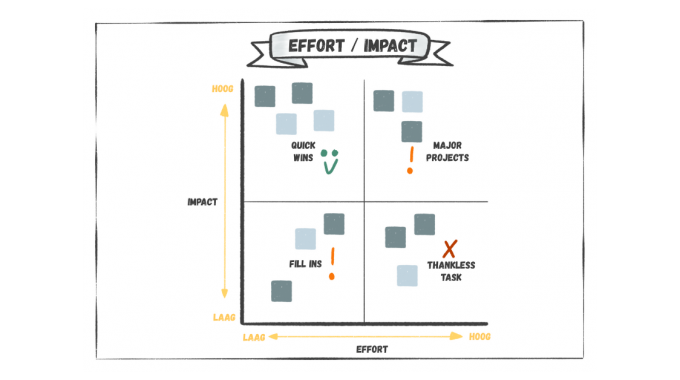

Due to their high value and low complexity, these features are the low-hanging-fruit opportunities in our business that we must execute with top priority. The quadrants created by this matrix are:

When aligned together, the criteria makes up several groups (or quadrants) that objectively show which set of features to build first, which to do next, and which to not do at all. If you can get more value with fewer efforts, that’s a feature you should prioritize. Can you afford the cost of building and provisioning the feature? Operational costs, development time, skills, training, technology, and infrastructure costs are just some of the categories that you have to think about when estimating complexity. The feature or product must also work for our business. It’s not enough that we create a feature that our customers love.

Product prioritization frameworks are a set of principles a strategy to help us decide what to work on next. Luckily for us, there is a more scientific way to prioritize our work. In other words, product managers are not sure if they’re working on the right thing.ĭue to the lack of customer data, we often fall into the pitfall of prioritizing based on gut reactions, feature popularity, support requests or even worse-going into an uphill feature parity battle with our competitors.
#Effort time sink matrix how to#
The biggest challenge for product managers is: Prioritizing the roadmap without market research.Ī staggering 49% of respondents indicated that they don’t know how to prioritize new features and products without valuable customer feedback. While this data sample is too small to make this a statistically significant report, the results will sound painfully familiar to you if you are a product manager. In a 2016 survey conducted by Mind the Product, 47 product managers named the most significant challenge they face at work. What are product prioritization frameworks? Todd Lombardo, Bruce McCarthy, Evan Ryan, Michael ConnorsĪn effective product prioritization process garners support from stakeholders, inspires a vision in your team, and minimizes the risk of working on something that nobody wants. “Opportunity cost is when you never get the chance to do something important because you chose to work on something else instead.” We need to ruthlessly prioritize features before we run out of resources. As product managers, it’s our job to make sure we’re working on the most important things first. The reality of building products is that you can never get everything done - priorities shift, resources are reallocated, funding is scarce. Prioritization in product management is the disciplined process of evaluating the relative importance of work, ideas, and requests to eliminate wasteful practices and deliver customer value in the quickest possible way, given a variety of constraints.


 0 kommentar(er)
0 kommentar(er)
